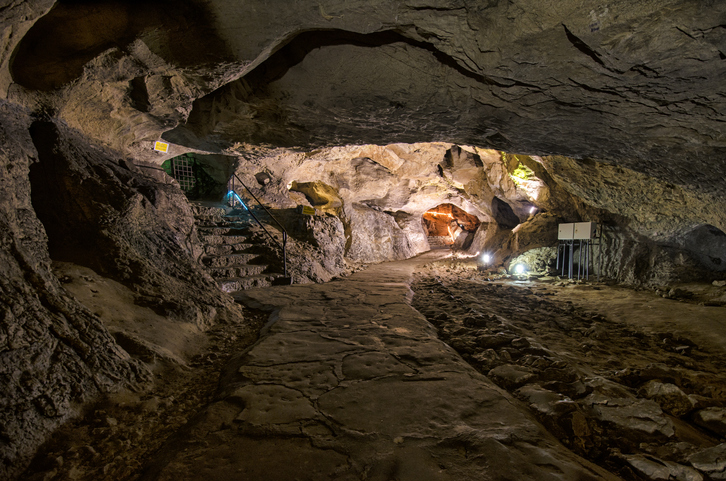
A part of Bacho Kiro cave. Photo by Monodon/Getty Images
Some of Europe’s Oldest-Known Modern Humans Are Distantly Related to Native Americans
Genome sequencing shows some individuals share family ties with surprising populations, and all boast plenty of Neanderthal relatives
Forty-five thousand years ago, some of the first modern humans to call Europe home lived in and around Bulgaria’s Bacho Kiro Cave. They created adornments, like beads and pendants of cave bear teeth. They fashioned stone and bone tools and colored them with red ochre. They hunted, butchered and feasted on local animals. Artifacts of this lifestyle were left scattered in the cave, but these ancient humans left little evidence of themselves. Just a single tooth and a few tiny bits of bone survived to the present day. Yet those fragments contained enough genetic material that scientists have now recreated some of the humans’ stories, revealing surprising information about both their ancestors and their descendants.
Two genetic sequencing studies published in different journals this week have sketched out the family trees of Europe’s earliest known modern humans, three 45,000-year-old individuals from Bacho Kiro Cave and one similarly aged skull from a Czechian hill site known as Zlatý kůň (Golden Horse). Only the Bacho Kiro individuals have living descendants and they’re found in surprising places—in East Asia and the Americas. The ancient humans from both ancient European sites do share one common ancestral strain—a healthy dose of Neanderthal DNA. Among the Bacho Kiro humans, evidence seems to show that when modern humans moved into Europe they commingled with Neanderthals longer, and later, than is commonly believed.

Comments